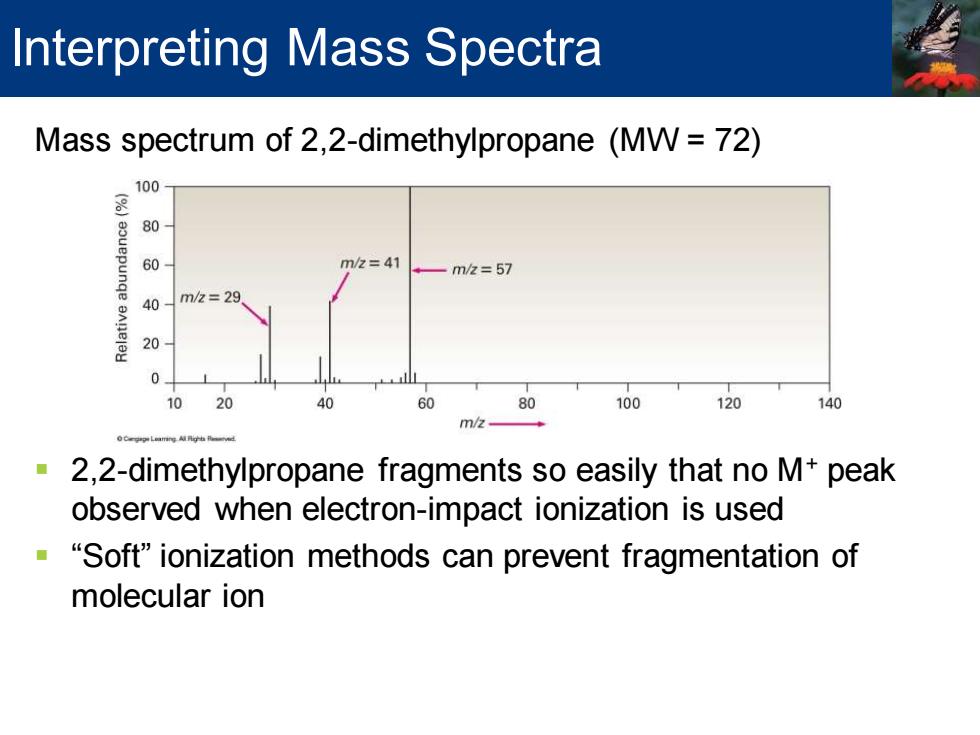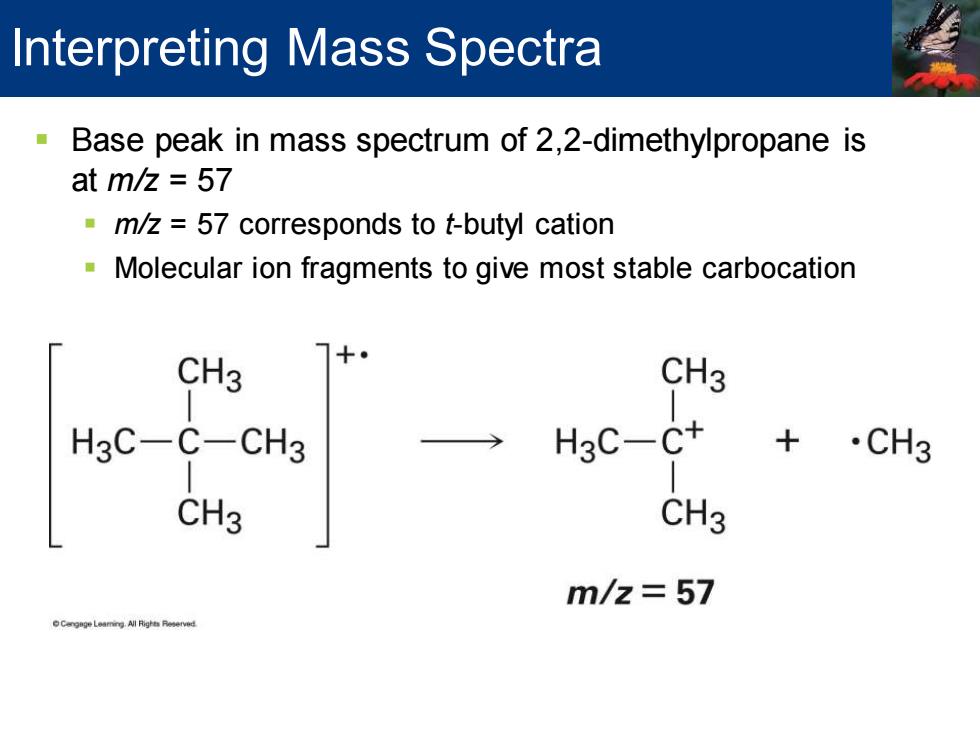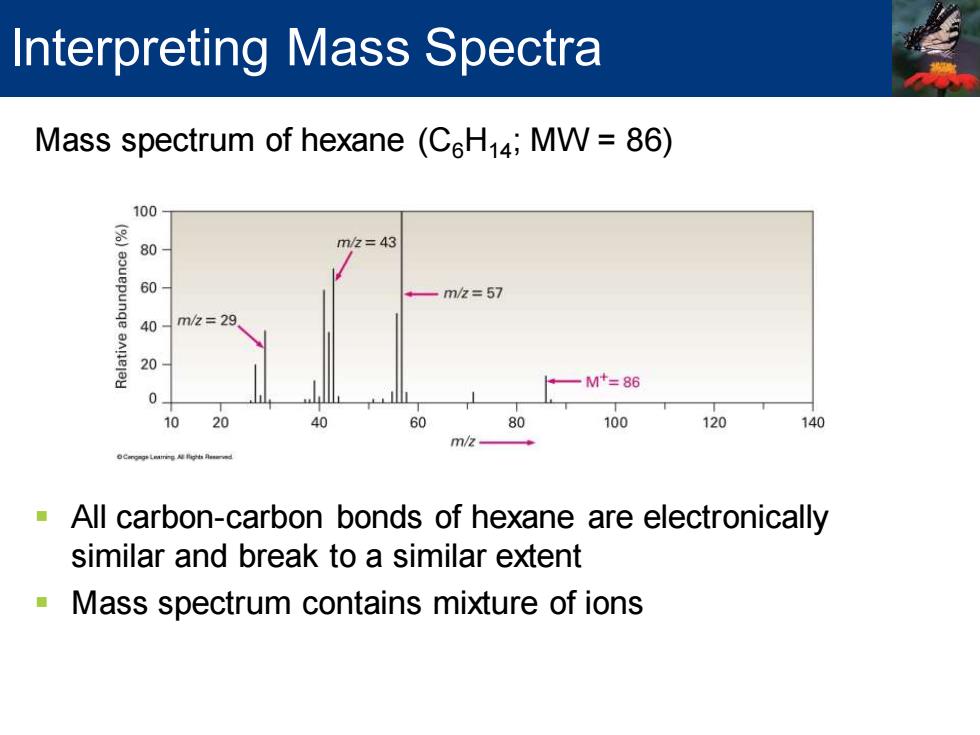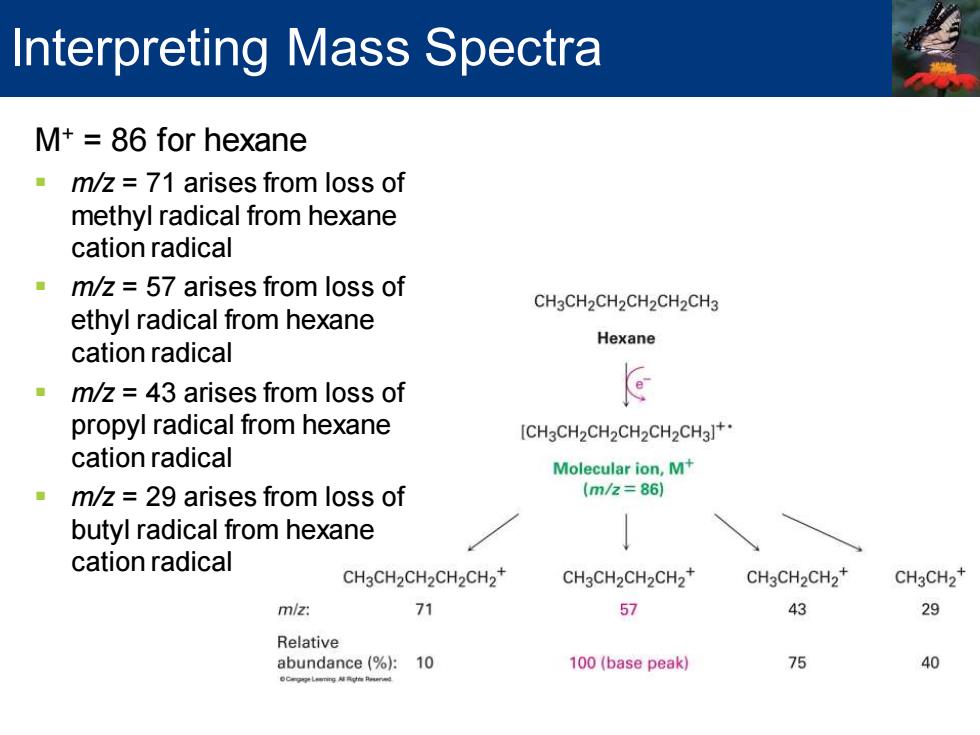
10-2 Interpreting Mass Spectra Molecular weight determined from molecular ion peak -High resolution double-focusing mass spectrometers are accurate to about 0.0005 amu M+1 peak results from presence of 13C and 2H Fragmentation occurs when high-energy cation radical falls apart One fragment retains positive charge and is a carbocation One fragment is a neutral radical fragment
Molecular weight determined from molecular ion peak ▪ High resolution double-focusing mass spectrometers are accurate to about 0.0005 amu ▪ M+1 peak results from presence of 13C and 2H ▪ Fragmentation occurs when high-energy cation radical falls apart ▪ One fragment retains positive charge and is a carbocation ▪ One fragment is a neutral radical fragment 10-2 Interpreting Mass Spectra

Interpreting Mass Spectra Mass spectrum of 2,2-dimethylpropane (MW =72) 100 80 60 m/2=41 ◆m=57 40 m/2=29 20 0 10 20 40 60 80 100 120 140 m/z 2,2-dimethylpropane fragments so easily that no M*peak observed when electron-impact ionization is used "Soft"ionization methods can prevent fragmentation of molecular ion
Mass spectrum of 2,2-dimethylpropane (MW = 72) ▪ 2,2-dimethylpropane fragments so easily that no M+ peak observed when electron-impact ionization is used ▪ “Soft” ionization methods can prevent fragmentation of molecular ion Interpreting Mass Spectra

Interpreting Mass Spectra Base peak in mass spectrum of 2,2-dimethylpropane is at m/z 57 m/z=57 corresponds to t-butyl cation Molecular ion fragments to give most stable carbocation CH3 CH3 H3C-C-CH3 H3C-C+ .CH3 CH3 CH3 m/z=57
▪ Base peak in mass spectrum of 2,2-dimethylpropane is at m/z = 57 ▪ m/z = 57 corresponds to t-butyl cation ▪ Molecular ion fragments to give most stable carbocation Interpreting Mass Spectra

Interpreting Mass Spectra Mass spectrum of hexane(CH14;MW=86) 100 8 80 m/z=43 60 -m/2=57 40 m/2=29 20 一M+=86 0 10 20 40 60 80 100 120 140 m/2 All carbon-carbon bonds of hexane are electronically similar and break to a similar extent Mass spectrum contains mixture of ions
Mass spectrum of hexane (C6H14; MW = 86) ▪ All carbon-carbon bonds of hexane are electronically similar and break to a similar extent ▪ Mass spectrum contains mixture of ions Interpreting Mass Spectra

Interpreting Mass Spectra M+86 for hexane m/z=71 arises from loss of methyl radical from hexane cation radical m/z=57 arises from loss of CH3CH2CH2CH2CH2CH3 ethyl radical from hexane cation radical Hexane m/z=43 arises from loss of propyl radical from hexane [CH3CH2CH2CH2CH2CH3]+. cation radical Molecular ion,M+ m/z=29 arises from loss of (m/2=86) butyl radical from hexane cation radical CH3CH2CH2CH2CH2+ CH3CH2CH2CH2+ CH3CH2CH2+ CH3CH2+ miz: 71 43 29 Relative abundance (%) 10 100(base peak) 75 40
M+ = 86 for hexane ▪ m/z = 71 arises from loss of methyl radical from hexane cation radical ▪ m/z = 57 arises from loss of ethyl radical from hexane cation radical ▪ m/z = 43 arises from loss of propyl radical from hexane cation radical ▪ m/z = 29 arises from loss of butyl radical from hexane cation radical Interpreting Mass Spectra